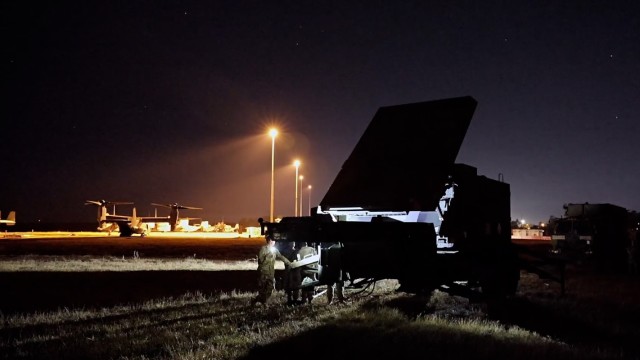
WASHINGTON — As part of next steps for the Janus Program, the Department of the Army has selected nine installations for consideration in which to site microreactor power plants, and the Defense Innovation Unit released an Area of Interest to solicit commercial solutions for advanced nuclear power technologies.
The Janus Program, the Army’s next-generation nuclear power program, aims to deliver secure, resilient, and reliable energy to support national defense installations and critical missions in accordance with EO 14299 Deploying Advanced Nuclear Reactor Technologies for National Security. In partnership with the Defense Innovation Unit (DIU), the program will build commercial microreactors through a milestone-based contracting model to accelerate delivery of advanced energy solutions to the warfighters.
Janus Program Site Selection
The Army identified nine sites through comprehensive analysis and on-site assessment to identify optimal locations for initial deployment. The process evaluated mission critical installations, energy requirements and resiliency gaps, power infrastructure, environmental and technical considerations. These sites mark the first step in expanding national energy resilience through next-generation nuclear technology. Listed in alphabetical order, the selected sites are:
- Fort Benning
- Fort Bragg
- Fort Campbell
- Fort Drum
- Fort Hood
- Fort Wainwright
- Holston Army Ammunition Plant
- Joint Base Lewis-McChord
- Redstone Arsenal
While the final number and location for these microreactors on Army installations will be determined as part of the acquisition process, the Army is committed to maximizing the number of sites based on technical feasibility, site suitability, and available resources.
“These early site selections align with the Department of War’s goal of accelerating the pace of deploying on-site nuclear generation at our installations,” said the Honorable Jordan Gillis, Assistant Secretary of the Army for Installations, Energy and Environment. “Through the use of the Army’s unique nuclear regulatory authorities, we are deploying a resilient, secure, and reliable energy supply for critical defense operations and in support of the most lethal land-based fighting force in the world.”
Microreactor power plants represent a significant technological advancement, in safety, security and waste management. They are safe by design, not by intervention protocols. The Janus Program is leveraging the Department of Energy and its network of National Labs to ensure the appropriate expertise is applied to the evaluation of proposed designs, operational plans, and emergency preparedness plans.
The rollout of Janus technology will occur in stages as the Army validates lessons learned and ensures safe, efficient implementation. These projects will be self-contained and protected appropriately. All projects will comply with the applicable federal, state, and local regulations, and leverage the safety features inherent in next-generation reactor designs. The Army does not anticipate any significant impact to installation land use.
The Army shares a commitment to public safety and transparency with our host communities and recognizes that the communities surrounding these installations have vested interest in their operations. Specific timelines for each location will be announced in future updates, as the team cooperates with military installations, residents, and the surrounding communities to keep all stakeholders informed. The Army is committed to providing transparent information throughout the planning process and welcomes public engagement and feedback.
Defense Innovation Unit Area of Interest
The Army has executed a Memorandum of Agreement with the DIU to utilize its Commercial Solutions Opening (CSO) process and Other Transaction Authority (OTA) to begin the solicitation process which will result in awarding select vendors Other Transactions (OTs) to execute on the Janus Program goals. An Area of Interest (AOI) notification has been released via DIU’s website to solicit industry concepts for deployment of advanced nuclear technologies. The AOI will gather technical and operational information from industry regarding deployment and use of microreactors on military installations to begin the CSO process.
"We’ve established a great partnership with the U.S. Army. DIU is ready and excited to leverage our rapid CSO process to execute the Janus Program in collaboration with our government and industry partners,” said DIU Energy Portfolio Director, Dr. Andrew Higier. “This collaboration will deliver advanced nuclear energy to Army installations, ensuring their most critical missions always have resilient and ready power."
“The Janus Program is taking its first step toward pairing specific nuclear reactor designs to specific U.S. Army installations,” said Dr. Jeff Waksman, Principal Deputy Assistant Secretary of the Army for Installations, Energy and Environment. “We will move to bending metal as quickly as possible, leveraging the enormous amount of technical talent gathered to execute this program.”
The release of the AOI and site selection demonstrate the Janus Program’s accelerated pace for the revitalization of American industrial capacity and technological leadership. By prioritizing the optimal installations to initially support microreactor power plants and working with industry to efficiently deploy next generation nuclear capabilities on our installations, these initiatives represent a substantial investment in the future of energy security for the Army and the Nation.

Social Sharing